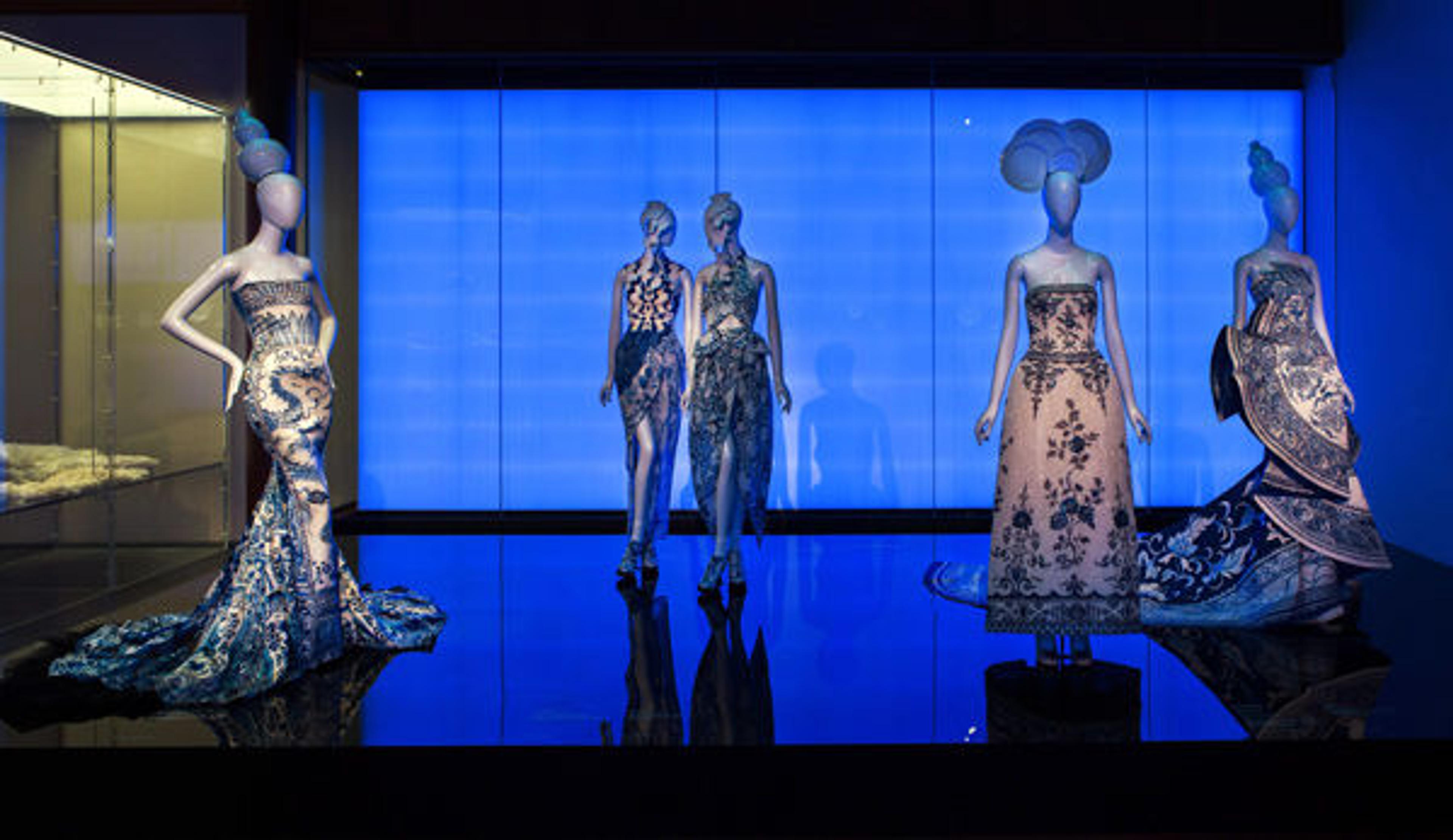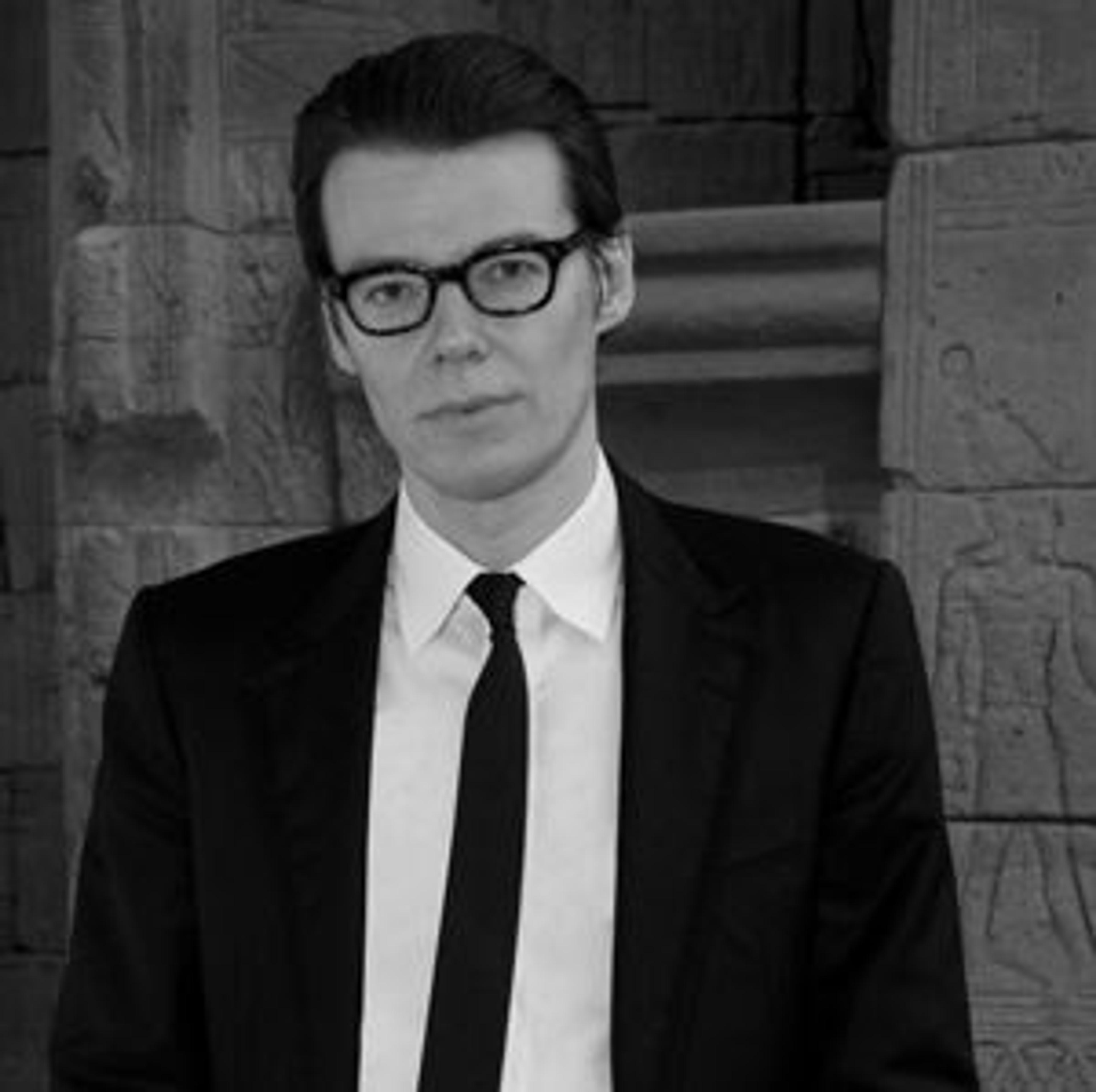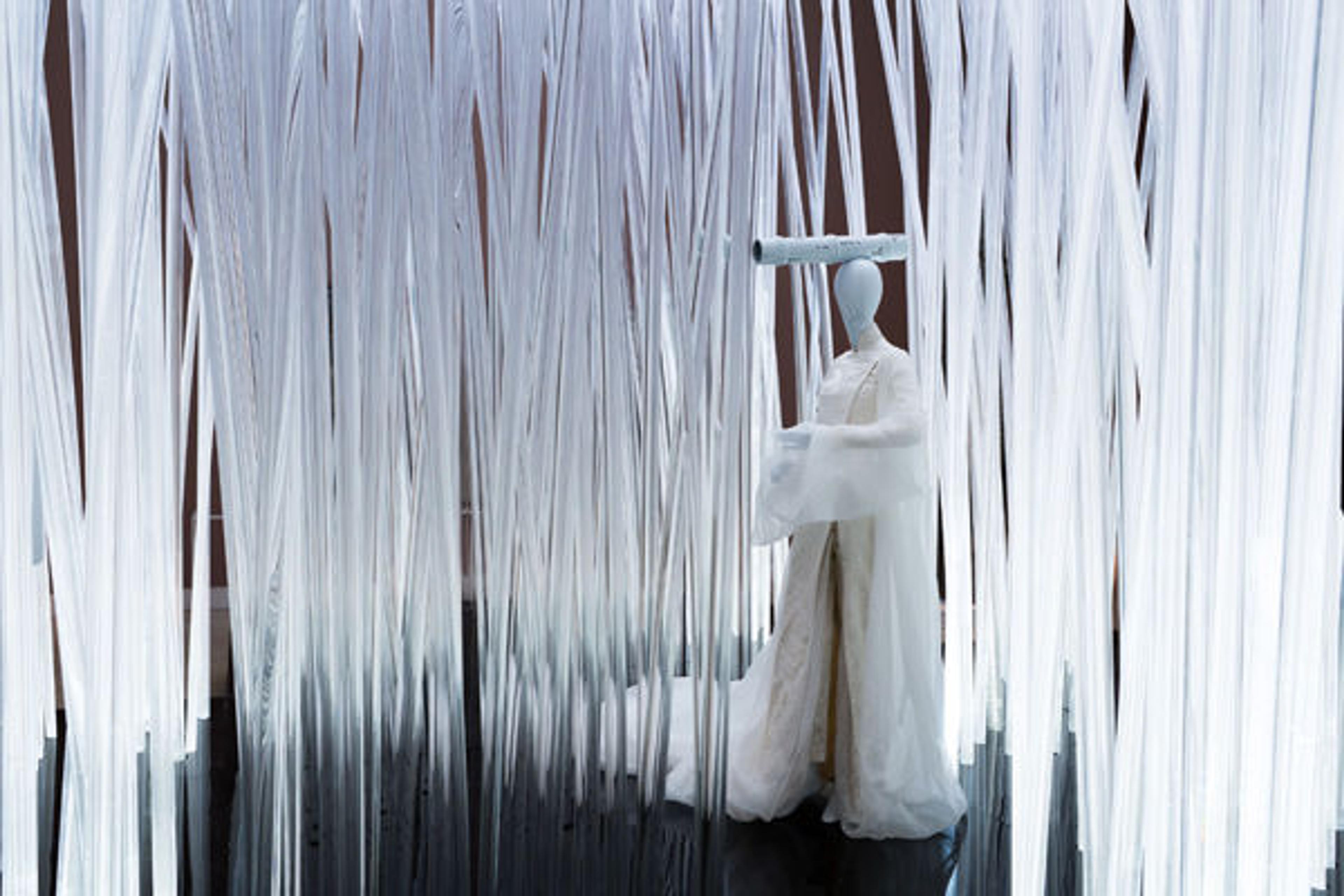
Gallery View: Chinese galleries, Frances Young Tang Gallery, Blue and White Porcelain. Photo © The Metropolitan Museum of Art
«Andrew Bolton, curator in The Costume Institute, recently spoke with me about the special exhibition China: Through the Looking Glass, extended through September 7.»
Right: Andrew Bolton. Photo by Karin Willis

Christopher Gorman: Why did you choose to focus on China for the spring Costume Institute exhibition this year?
Andrew Bolton: The main catalyst in choosing to focus on China was the opportunity to collaborate with the Department of Asian Art in the year of their centennial celebration. We also wanted to tap into the broader cultural impact that China is having on the West, and China's own interest in the West. In terms of fashion, there are many design houses—Chanel, Dior, and Balenciaga, to name a few—who are showing collections in China. It's not just because it's a huge market, it's also because those houses have been influenced by Chinese aesthetics since their founding. I wanted to tease out that broader impact of China on the West, which predates the eighteenth century.
Left: Film still from Limehouse Blues, 1934. Photo courtesy of THE KOBAL COLLECTION/JONES, RAY

Christopher Gorman: You assembled quite a dream team to work with you on this exhibition, many of whom are from the world of film. Was that decision intentional, and how did that evolve?
Andrew Bolton: When fashion designers, particularly today's designers, look to China for inspiration, they often gravitate towards filmic references. In a way, film is their lens into China, so it is a major part of the exhibition. I've been a fan of Wong Kar Wai for a long time, and he has an extraordinary eye. He's very aware of fashion within his films, so he was an ideal choice for artistic director. We worked with him in selecting the films, and he did all the editing. We also worked with his wonderful lighting designer, Philippe Le Sourd.
Because it was an extraordinarily complicated exhibition for the production designer to install—retrofitting permanent exhibition galleries to accommodate costume rather than flat works of art—I sought out someone I had worked with before, and who was from the world of cinema, Nathan Crowley. My goal was for visitors to experience each room as a film still and as a cinematic journey, so Nathan was ideal.
Another crucial collaborator was Stephen Jones, who created all the headpieces for the mannequins. Stephen is a thoughtful designer and milliner who tells stories through hats. The headpieces needed to have a connection to the clothes, so for example, in the blue-and-white porcelain section (gallery 213), Stephen made hats in the shape of the antique ginger jars in that gallery.
Christopher Gorman: As The Costume Institute's biggest exhibition ever—three times the square footage of Alexander McQueen: Savage Beauty—and perhaps one of the Met's biggest ever, how did such a massive undertaking come to fruition?
Andrew Bolton: It could only happen with the extraordinary team we have here at the Met, and I honestly don't think any other Museum could have created this exhibition. In addition to the Department of Asian Art and The Costume Institute, we have works in the show from European Sculpture and Decorative Arts, The Lehman Collection, Modern and Contemporary, Drawings and Prints, and Photography. Everyone wanted to collaborate, and everyone had positive feedback to give. The spirit of collaboration and camaraderie allowed a show of this scope and complexity to happen.

View of gallery 206, Arthur M. Sackler Gallery. Photo © The Metropolitan Museum of Art
Christopher Gorman: Is there a certain way you hope visitors will navigate the gallery spaces? Where are the best locations to begin and end?
Andrew Bolton: An ideal route is to start in The Costume Institute, then go up to the Egyptian landing, and upstairs to explore the Chinese galleries, ending in the "Bamboo Forest" in the Arthur M. Sackler Gallery. However, it is almost impossible to enforce a route through so much space with so many points of entry, so I curated the exhibition to ensure that each room stands alone and has its own identity and narrative, but still hangs together and remains in sync with the others. I want it to be a bit disorientating, like Lewis Carroll's Through the Looking Glass—falling down a rabbit hole—because the exhibition isn't about China per se, it's about the virtual China that exists in the imaginations of Western fashion designers.
This article has been translated into Chinese by Xin Wang.
Related Links
China: Through the Looking Glass, on view May 7–September 7, 2015
China: Through the Looking Glass—Gallery Views on MetMedia
The Met Asian Art Centennial 2015